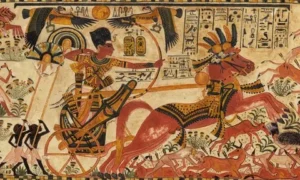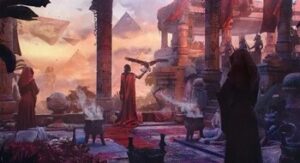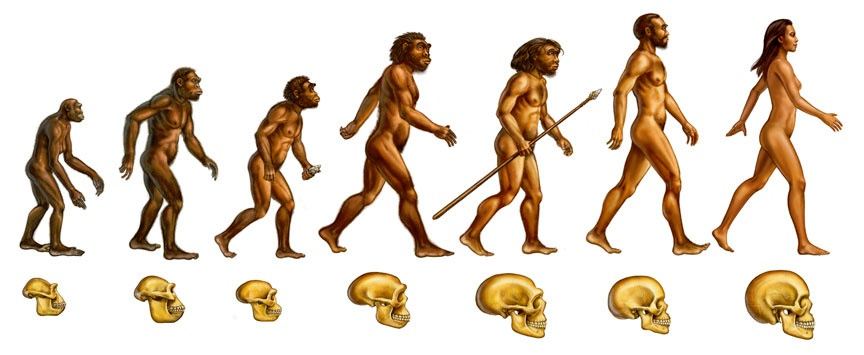What is it About the Ancient World That Fascinates Us So Much?
Maybe it’s the mystery. The connection to something greater than ourselves. Or maybe it’s simply the beauty and skill that resonates across thousands of years. Whatever the reason, the works created by early civilizations have captivated people for centuries. They hold answers about who we are, what we valued, and how we saw the world.
Welcome to the world of ancient artz, where stone, pigment, and clay turned into timeless masterpieces, giving us a glimpse into ancient societies and their worldviews. Let’s dive into what ancient artz is, its history, forms, and the elements that make it unique. By the end, you’ll understand how these early expressions are still shaping our lives today.
What is Ancient Artz?
 The term “ancient artz” covers all the creative expressions that originated from the earliest human societies up until roughly the fall of the Roman Empire in the 5th century AD. Think about it this way: Ancient artz was a way to communicate without words, share knowledge without books, and express beliefs before organized religion.
The term “ancient artz” covers all the creative expressions that originated from the earliest human societies up until roughly the fall of the Roman Empire in the 5th century AD. Think about it this way: Ancient artz was a way to communicate without words, share knowledge without books, and express beliefs before organized religion.
It all started with cave paintings, rock carvings, and clay sculptures tens of thousands of years ago. Fast forward to the Bronze Age, and we see the rise of art forms in civilizations like Egypt, Mesopotamia, Greece, and Rome. These works aren’t just pretty artifacts—they’re snapshots of ancient people’s relationships with nature, religion, and power.
How Old is Ancient Artz?
Let’s put it in context. Ancient artz is really, really old.
Cave Art
Some of the oldest forms date back as far as 40,000 years. The famous cave paintings in Lascaux, France, and Altamira, Spain, show us animals like bison and deer, illustrating what was important to prehistoric humans.
Early Civilizations
Around 3000 BCE, the first organized civilizations emerged in places like Egypt and Mesopotamia. Their art developed quickly and became highly symbolic, serving religious, social, and political purposes.
Classical Age
By 800 BCE, the Greeks started shaping the classical style, giving us the sculptures and architecture that influenced the entire Western world. From early carvings to the intricate mosaics of the Romans, ancient artz spans tens of thousands of years, each piece leaving a legacy that influences us even today.
Three Main Types of Ancient Artz
When we talk about ancient artz, we’re generally looking at three main types:
Sculpture
Ancient sculptures are the oldest form of “fine art.” From the towering statues of Egyptian pharaohs to Greek sculptures of gods and heroes, these pieces showed the power and beauty of their subjects. The materials used—stone, bronze, wood—varied by region but carried deep symbolism. Some pieces, like the Moai statues on Easter Island, represented ancestors or divine beings.
Painting
Cave paintings were the earliest form of ancient artz. Later, cultures like the Egyptians and Greeks developed frescoes, which were vibrant wall paintings depicting myths, nature, and daily life. These works were about more than aesthetics; they were ways to record, educate, and inspire.
Architecture
Ancient architecture was ambitious, both in design and purpose. Think of the Egyptian pyramids, the Parthenon in Greece, and Rome’s Colosseum. Each structure was a feat of engineering that showcased a culture’s beliefs and power. They weren’t just buildings; they were symbols of divine or imperial authority.
Elements of Ancient Artz

What made ancient artz so impactful? The elements that make up this art give it power and depth:
- Form: Shape and volume, especially in sculpture and architecture, made pieces look monumental and god-like.
- Line: Lines defined everything, from the contour of a face on a Greek vase to the intricate designs on a Roman mosaic.
- Color: Though time has faded many colors, pigments were used strategically. For instance, reds and golds were seen as powerful, while blues represented the divine.
- Texture: Sculptors used texture to make stone look like fabric or skin, bringing their subjects to life.
- Symbolism: Many figures and shapes in ancient artz were symbolic. Snakes, birds, and plants often carried hidden meanings about protection, wisdom, or fertility.
- Composition: Everything had its place. Ancient artists didn’t just throw elements together; they organized them carefully, creating balance and focus that still appeals to us today.
Famous Examples of Ancient Artz
Now that you know the basics, let’s explore some legendary examples from around the world:
- Cave Art
- Lascaux Caves (France): Known for its 17,000-year-old animal paintings, capturing the spirit of prehistoric hunting.
- Altamira (Spain): This site features polychrome rock paintings that bring to life the animals of ancient Europe.
- Sculpture
- Venus of Willendorf (Austria): A tiny, 25,000-year-old figurine symbolizing fertility and womanhood.
- Moai Statues (Easter Island): Large monolithic figures, likely representing powerful ancestors.
- Ancient Egyptian Art
- Pyramids of Giza: Built as monumental tombs, showcasing engineering skills and religious beliefs about the afterlife.
- Temple of Karnak: A complex featuring columns and walls covered with reliefs, honoring Egyptian deities.
- Ancient Greek Art
- Parthenon Sculptures: Classical depictions of gods and heroes, portraying an idealized human form.
- Greek Pottery: Known for red-figure and black-figure techniques, often telling stories of mythology and daily life.
- Ancient Roman Art
- Colosseum: An architectural marvel used for public spectacles, exemplifying Roman engineering.
- Roman Mosaics: Often found on villa floors, showing nature scenes or mythological events.
What Can We Learn from Ancient Artz?
Ancient artz offers more than historical knowledge; it gives us life lessons and shows how human creativity can transcend time. Here’s what these early works teach us:
- Creativity Knows No Boundaries: From prehistoric artists to Roman architects, ancient creators pushed the limits of their time.
- Symbols Connect Us: Symbols like the Egyptian ankh or the Greek laurel carry meanings that still resonate today. They reflect universal ideas—life, victory, wisdom—that we continue to celebrate.
- Art as Power: Much of ancient artz was created to impress or to communicate power, especially by rulers or religious figures. It shows how art can shape perception and influence societies.
FAQs on Ancient Artz
Q: Why is ancient artz important today?
A: It connects us to our roots, showing us what early humans valued and believed. It’s also a huge influence on modern art and architecture.
Q: Are there still undiscovered ancient artz pieces?
A: Definitely! Archaeologists are finding new artifacts every year, giving us more insight into ancient cultures.
Q: What makes ancient artz different from modern art?
A: Ancient artz was often more symbolic and religious. Modern art, however, is more focused on individual expression and aesthetic.
Q: How is ancient artz preserved?
A: Museums and governments work to protect ancient artz pieces. They use climate control, restoration, and sometimes digital technology to keep artifacts safe.
Q: Can I see ancient artz online?
A: Yes! Many museums now offer virtual tours. Some famous sites, like the British Museum, have online exhibits of their ancient art collections.
In Conclusion
Ancient artz is more than relics of the past. It’s a profound testament to the human spirit, creativity, and the universal search for meaning. From the tiniest figurine to the grandest temple, these works show us how civilizations expressed themselves and what they valued, much like how A Returner’s Magic Should Be Special 268 explores the complexities of human experience and the quest for significance in a different context.
Whether you’re captivated by a Greek statue or intrigued by Egyptian hieroglyphs, these pieces have stories to tell. They bridge the gap between past and present, helping us understand who we are, where we come from, and why art will always matter, much like the characters in A Returner’s Magic Should Be Special 268 navigate their own journeys toward self-discovery.
So, next time you see a piece of ancient art, take a moment. Realize that it’s not just a decoration but a window into humanity’s oldest dreams and deepest beliefs. That’s the beauty of ancient artz, just as A Returner’s Magic Should Be Special 268 illustrates the profound nature of personal transformation.
https://youtube.com/shorts/_kwSR9WlN3I?si=YT1ykPpNVzl6jnMP





